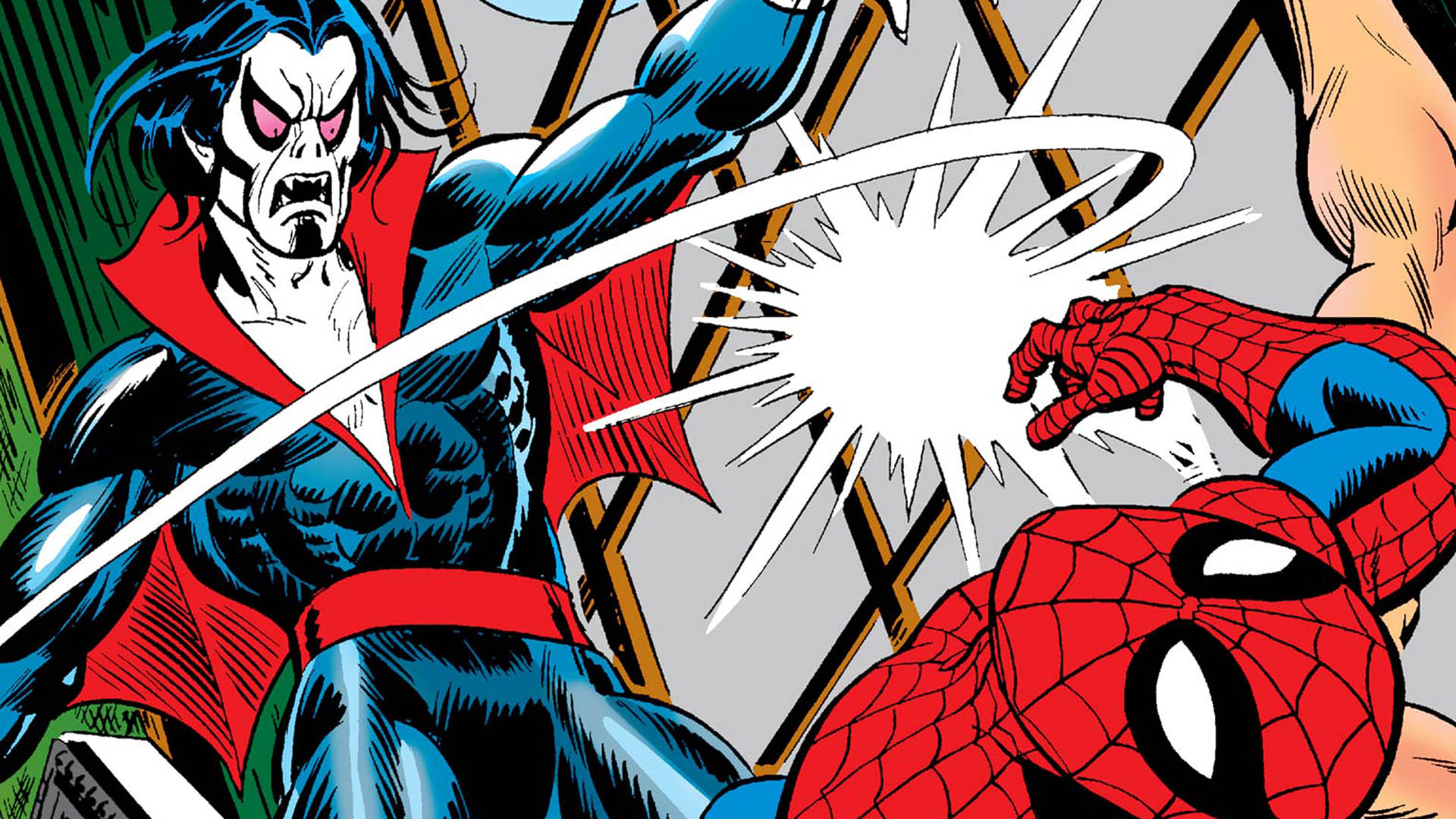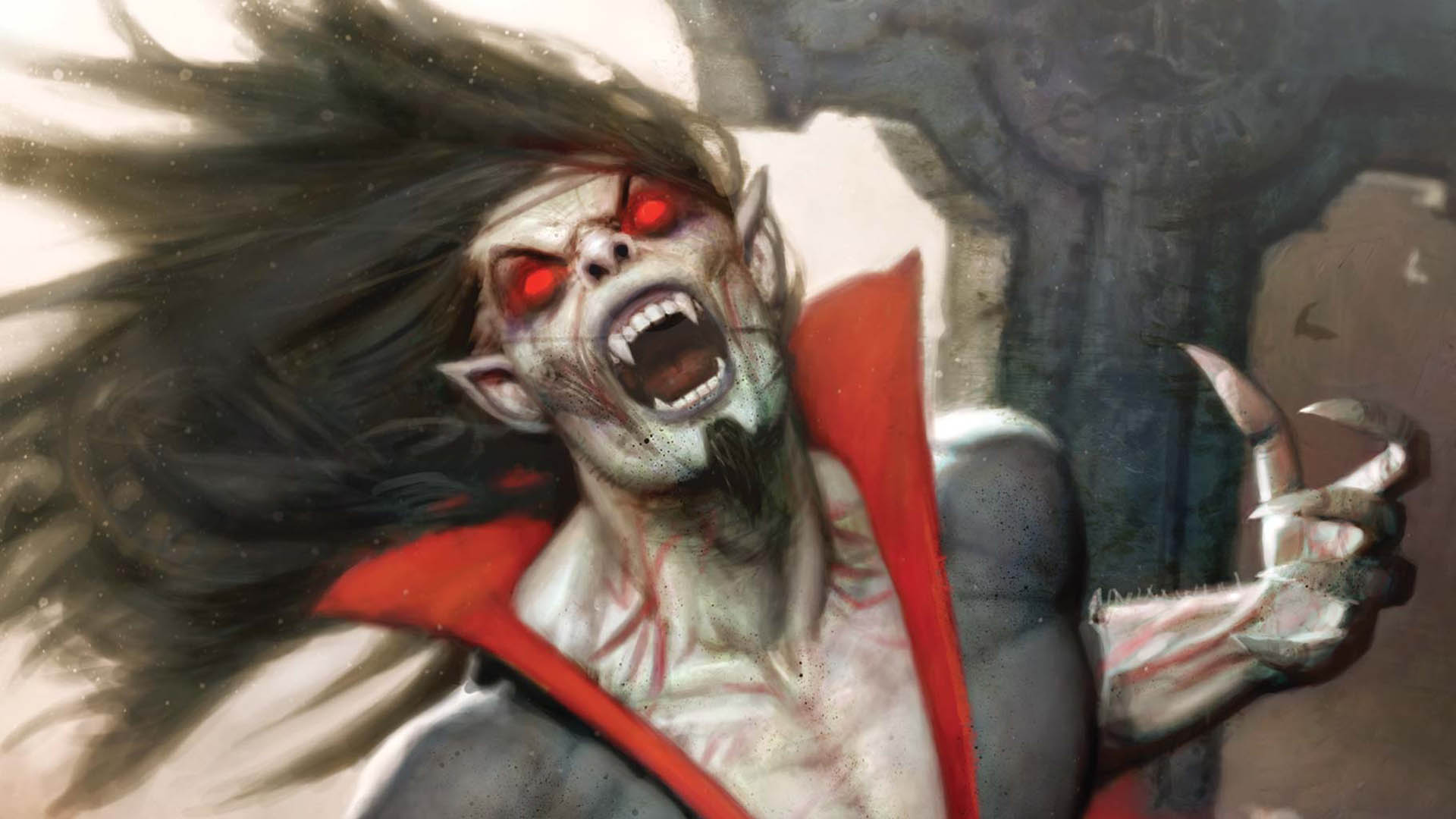Morbius - the comic book history of Marvel's first official vampire
Jared Leto's Morbius, the Living Vampire explained

Morbius the Living Vampire … Michael to his friends … is the newest Spider-Man supporting character to populate Sony's Universe of Marvel Characters. The studio's franchise of Spider-Man adjacent films began with 2018's Venom and its 2021 sequel Venom: Let There Be Carnage and will eventually be joined by Madame Web, Kraven the Hunter, and others.
But despite debuting in the pages of Marvel Comics over 50 years ago in 1971, the vampiric anti-hero isn't quite a household name for Marvel fans who prefer their stories on the big and small screen.
Sure, there's been a couple of trailers for the April 1 film and the usual barrage of pre-release press and video, but they've only just scratched the surface of the storied history of the so-called 'Living Vampire' and his place in the Marvel Universe, which includes the Spider-Man corner of the House of idea's comic book world, along with its larger horror wing.
Whether you're anticipating seeing the film and want to know more or just saw the film and … want to know more, Newsarama can play the Van Helsing role and share our extensive vampiric knowledge about Morbius' history and the connections that may point the way to his cinematic future.
Who is Morbius?

Dr. Michael Morbius is a Greek biologist and biochemist who suffers from a rare blood disorder. While traveling to New York, Morbius attempts to find a cure for his lifelong illness, which, at this stage, was actually killing him. To do that, Morbius experiments with a radical treatment involving vampire bat DNA and electroshock therapy.
Don't try this at home, folks.
Instead, Morbius becomes afflicted with a far worse disease that resembled the bloodlust of supernatural vampirism. The reason Morbius' powers are science-based and not supernatural is that the Comics Code Authority had a rule stating that supernatural characters that had a demonic nature weren't allowed to be published.
Get the best comic news, insights, opinions, analysis and more!
But in 1971, the code was updated and eventually stated that "vampires, ghouls, and werewolves" would be allowed "when handled in the classic tradition such as Frankenstein, Dracula, and other high caliber literary works written by Edgar Allan Poe, Saki, Conan Doyle and other respected authors whose works are read in schools around the world."
At the time, Spider-Man was going through his own mutation and had grown four more arms, looking like an actual spider. Morbius was trying to reverse his sudden condition but found himself attacked by the Spider-Man nemesis, the Lizard. Soon though, Spider-Man and the Lizard teamed up against Morbius to recover a sample of his blood to cure both of their own mutated states.
Throughout his quest for a cure, Morbius has battled the likes of Spider-Man, Venom, Carnage, the Human Torch, the X-Men, Blade, and Jack Russell, the Werewolf by Night.
What are Morbius' powers?

With his mutated condition, Morbius has to drink blood to survive, but he also gained the ability to fly, as well as superhuman strength, super speed, and accelerated healing.
His appearance became much more hideous with his upper canine teeth growing into sharp fangs, his nose flattened to appear more like that of a bat's, and his skin became ghost-white.
He also gained the ability to turn others into similar 'living vampires' like himself by biting them and drinking their blood. In a cruel twist, his own blood has been found to cure those who become 'living vampires' like this, but Morbius himself isn't affected by the cure.
How does Morbius fit into the Marvel Universe?

Morbius is in the supernatural area of the Marvel Universe that includes Man-Thing, Werewolf by Night, Man-Wolf, Ghost Rider, Blade, Satana, and Son of Satan.
While not a straight-up hero, Morbius isn't the villain he was originally portrayed as; instead, working as an anti-hero carving his own path towards his own brand of justice.
As a member of Legion of Monsters as well as the Midnight Sons, Morbius has fought many arcane villains from the Marvel U.
Who is Morbius in the Marvel movies?

Morbius is fast approaching its release date, and the new trailer adds to the clues seen so far that indicate how Jared Leto's character fits within the Marvel movies - both Venom's Sony Pictures of Marvel Characters universe and even the Marvel Cinematic Universe. The new featurette seems to double down on the tease about Morbius' MCU connections, highlighting him as a specifically Marvel character, and showing more of Michael Keaton's Adrian Toomes AKA Spider-Man: Homecoming's the Vulture.
Sony Pictures has kept Morbius close to his comic book origins, from his blood disorder and look, down to his Nobel Prize achievements in his work as a biochemist. And like in comic books, Morbius isn't an actual vampire but a 'scientific' vampire with abilities culled from experimentations with a rare form of bat.
The big thing that seems missing is the role of other Marvel characters in his origin - specifically the Lizard and Spider-Man. That being said, two key elements in the Morbius teaser trailers have shown there's some kind of unprecedented access into the Marvel Cinematic Universe for the Sony film, highlighted by the surprise appearances by Keaton's Toomes in the trailers. Recent comments by Leto also strongly suggest Morbius will inhabit the Marvel Multiverse that's being set up in Disney Plus' Loki, What If...?, the global box office smash Spider-Man: No Way Home, and then Doctor Strange in the Multiverse of Madness, which hits theaters five weeks after Morbius.
Maybe he'll meet Spider-Man after all.
Now that you're caught up on who Morbius is, check out what Marvel comic book stories you should read, before or after eeing the movie.
Lan Pitts likes watching, talking, and writing comics about wrestling. He has mapped every great taco spot in the DC and Baltimore areas. He lives with his partner and their menagerie of pets who are utterly perfect in every way.


